Je dis bonjour French Comprehensible Input Lesson
Je dis bonjour French Comprehensible Input Lesson
$4.50
This French comprehensible input story is so easy, it can be done in the first or second week of French level 1! It has a lot of repetition, but also teaches about a very important cultural touchpoint – the need to say “bonjour” when you interact with other people.
This “Je dis bonjour” French comprehensible input story is so easy, it can be done in the first or second week of French level 1! It has a lot of repetition, but also teaches about a very important cultural touchpoint – the need to say “bonjour” when you interact with other people.
This item includes a story with 4 targeted vocabulary structures that are used multiple times throughout the story.
The structures in “Je dis bonjour” are:
je dis – I say
je suis – I am
une personne polie/impolie – a polite/impolite person
quand je vais – when I go
This very simple story about saying Bonjour to those you meet during the day is told in two different ways. There is a printable text version, and an animated mp4 version. Tell the story as you watch it (pause if you want to stop and discuss or storyask!), or just watch it for comprehension. The video is just under 4 minutes long, with pause time for students to read the text.
To accompany the video and printed story, there are several activity pages – a comprehension worksheet, an activity to practice au and aux (no explanation – just using what students heard in the story), and a story retell page. Answer key included.
To sum it up, the item includes:
✓ a video mp4 file of the story with text
✓ link to videos online so your students can rewatch on their own
✓ printable pdf story
✓ comprehension question worksheet
✓ au/aux worksheet
✓ story retell worksheet
✓ answer key
If you aren’t familiar with the process of storyasking and circling, here are some tips for using this lesson plan:
– Use the pdf of the story as reading practice. You might have students read it before or after you use the video.
– Tell the story with the video. There is no sound for the video, this is done purposely so that you can use the story for storyasking. Tell the story a little at a time, pausing the video frequently to ask questions. This will help you to circle the vocabulary and structures.
Add details! If the sentence says ” Quand je vais au zoo,je dis bonjour” – ask questions such as “Do you go to the zoo? What is the name of the zoo? Is there a lion at the zoo? Is there an elephant at the zoo? Is the lion dangerous? Is the elephant dangerous? Do you prefer an elephant or a lion? What is the lion’s name? Is the lion big or small?” Add as much detail as you like so that students can hear the vocabulary and structures as many times as possible.
– Once you have done the storyasking part of the task, now it is time for the students to do the comprehension and retell. These are pdf files that you can send to the students. You can also share the link to the page with the video of the story, so the students can watch the video on their own and practice retelling at their own speed.
– Finally, you can have students do the retell. They can do the written retell, the spoken retell, or both.
Click HERE to join my mailing list and get a free article about adapting a textbook to CI!
1 review for Je dis bonjour French Comprehensible Input Lesson
Only logged in customers who have purchased this product may leave a review.







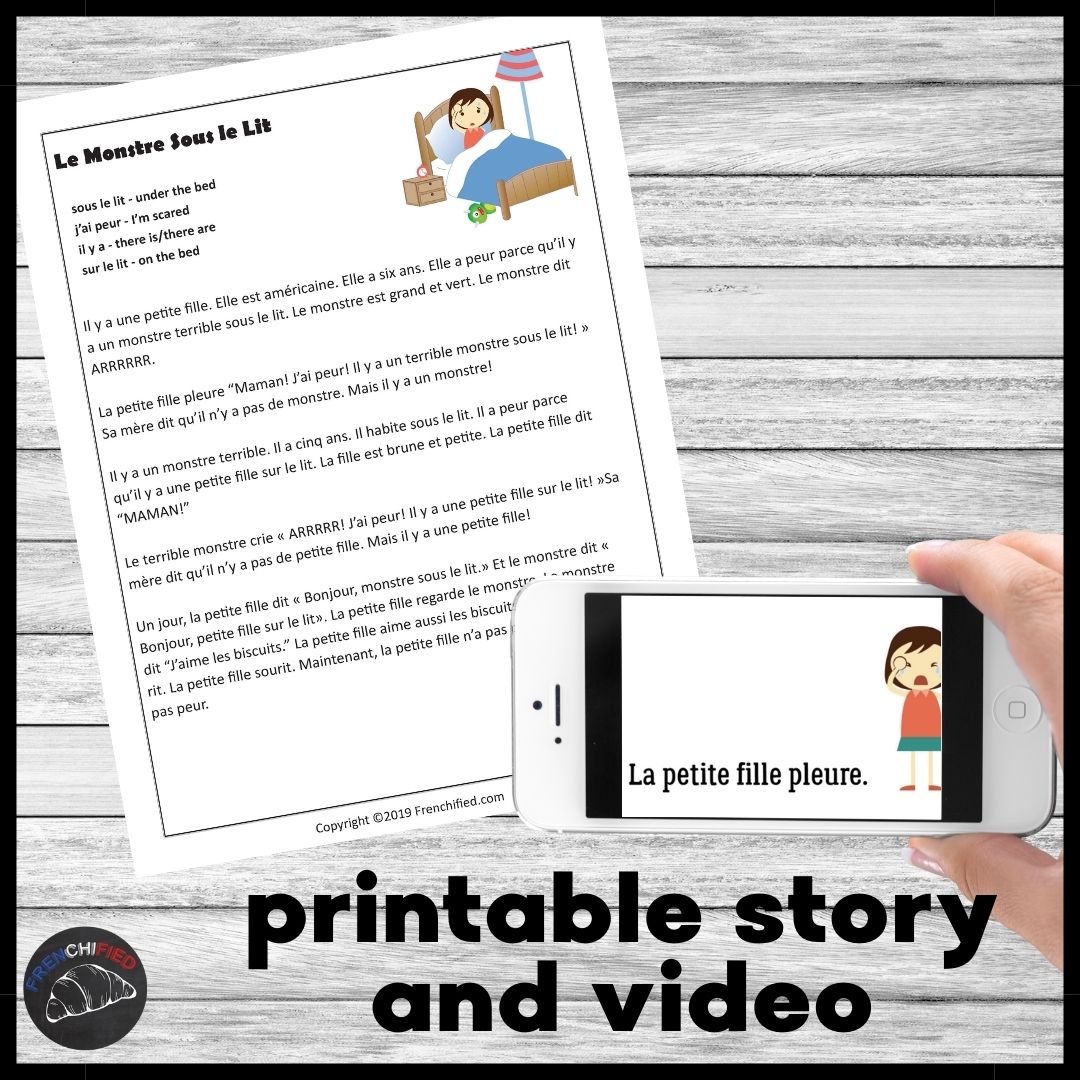

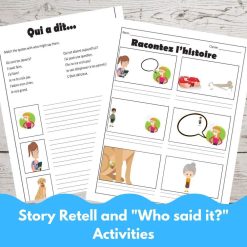



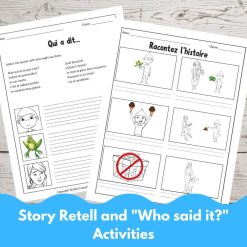


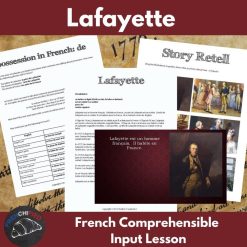
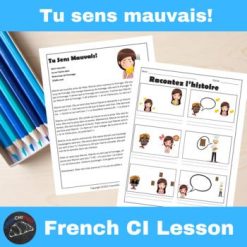

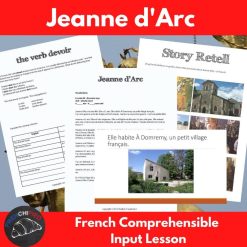


frenchified –
This was a great addition to my greetings unit; I love getting students reading right away! – Tracey S.